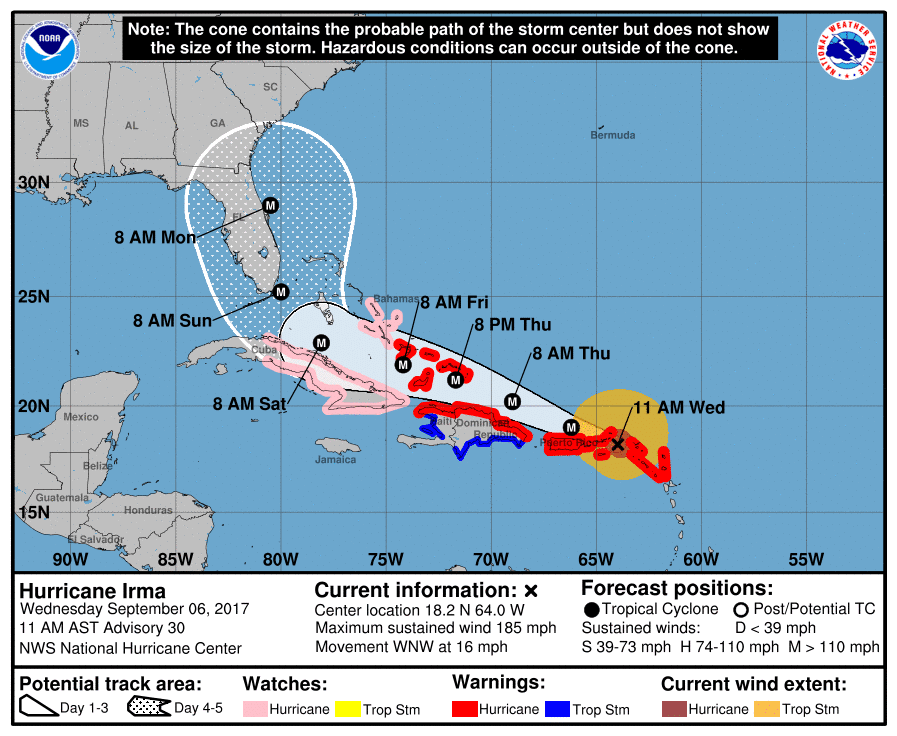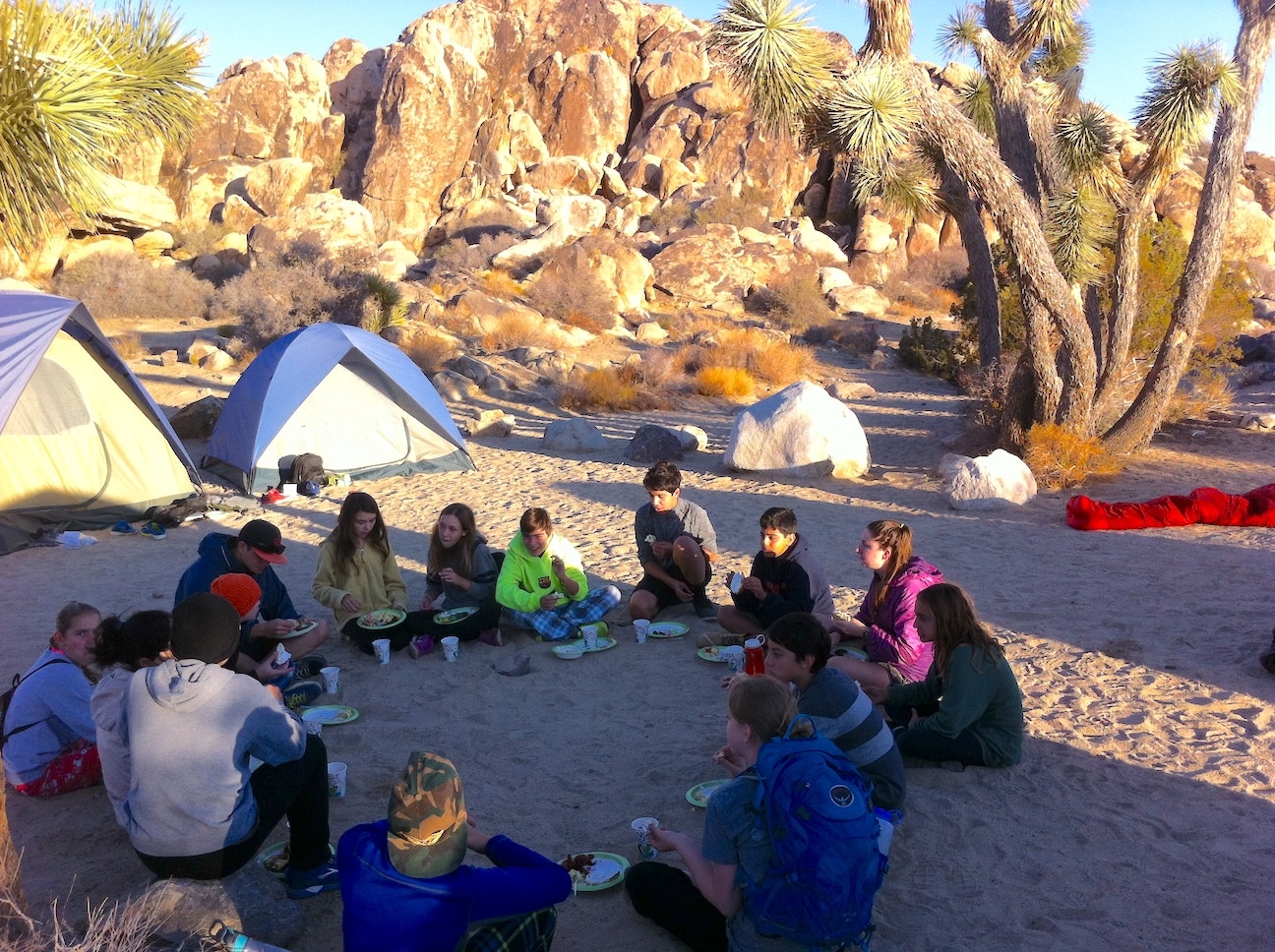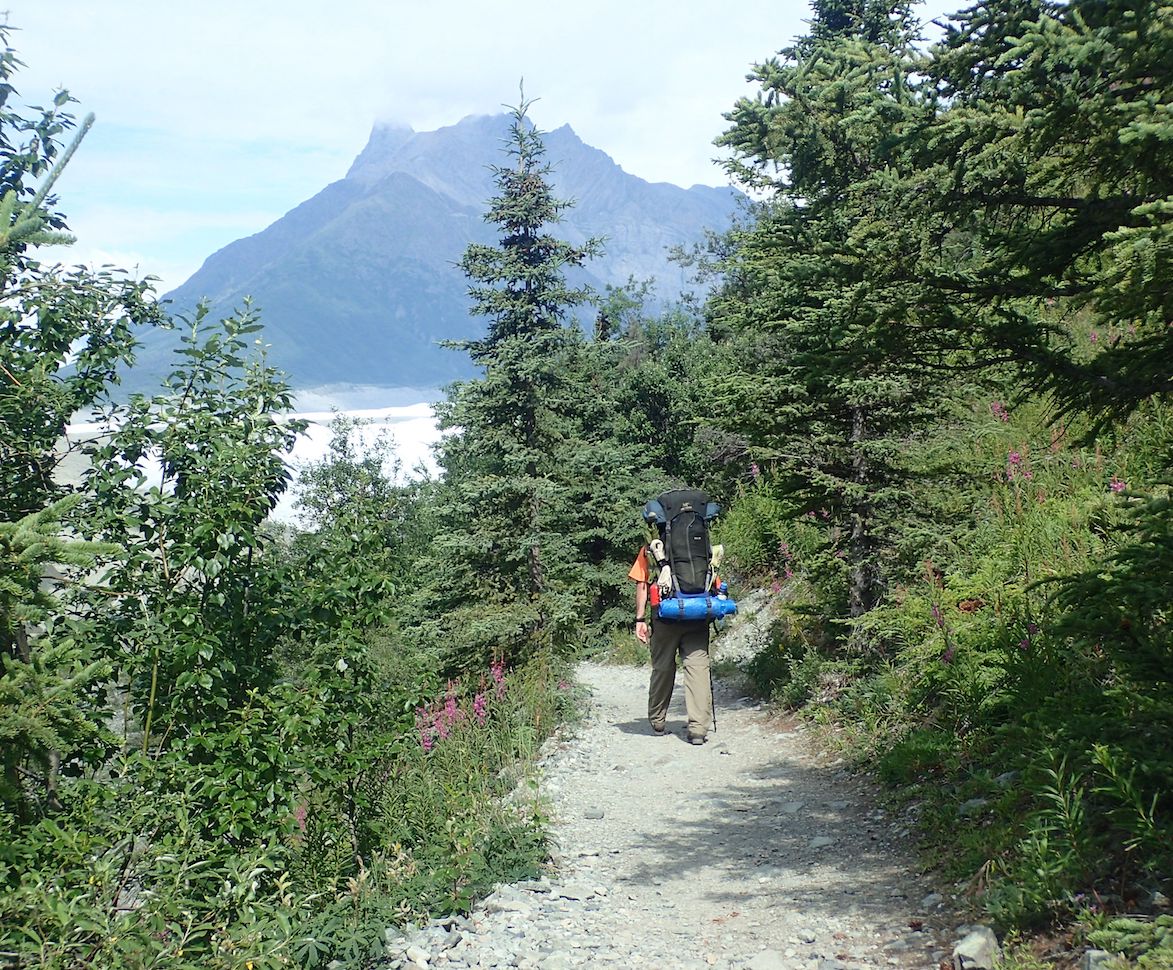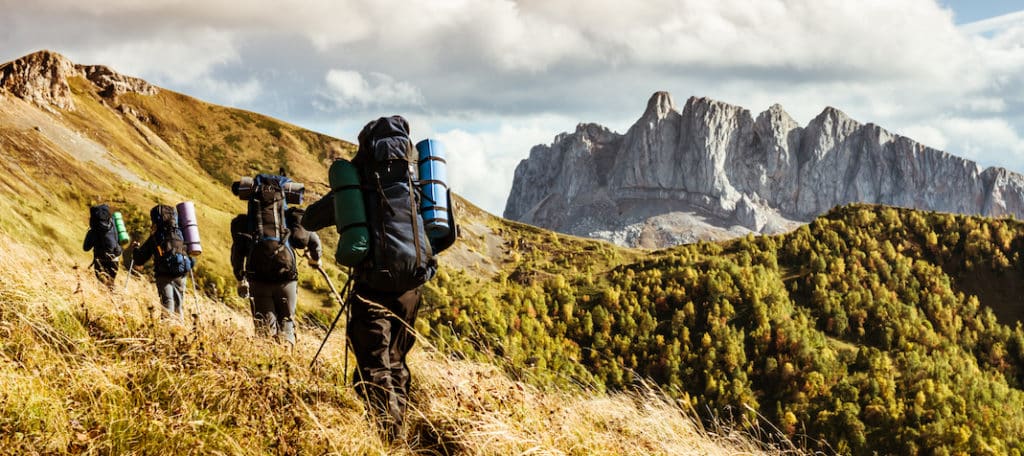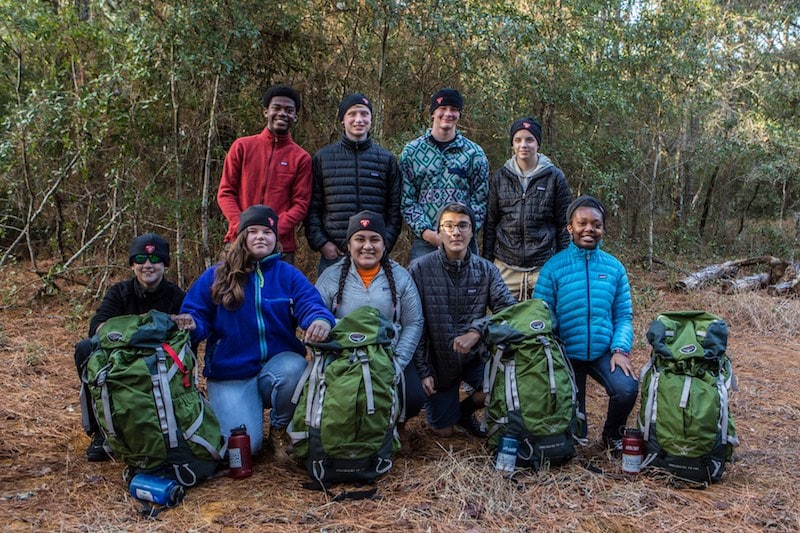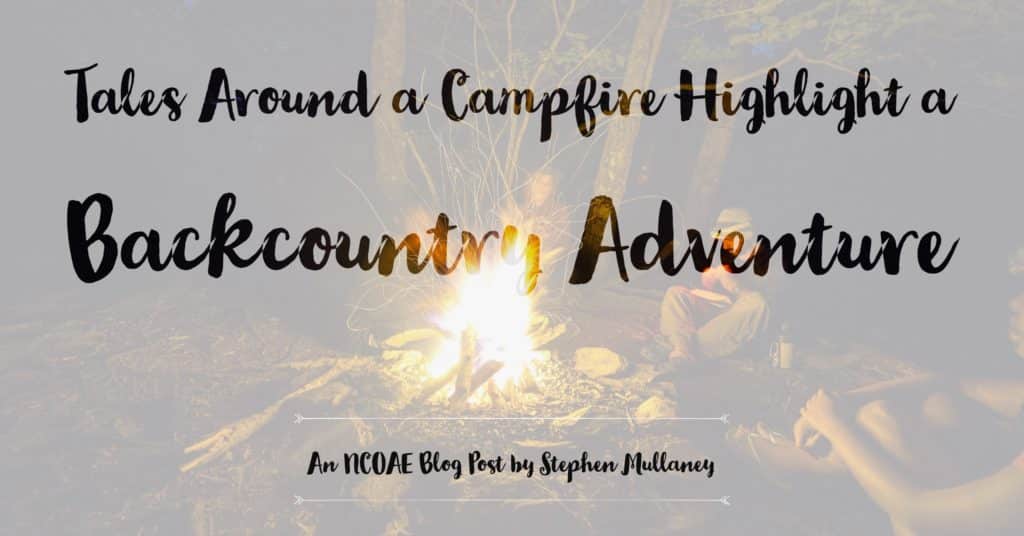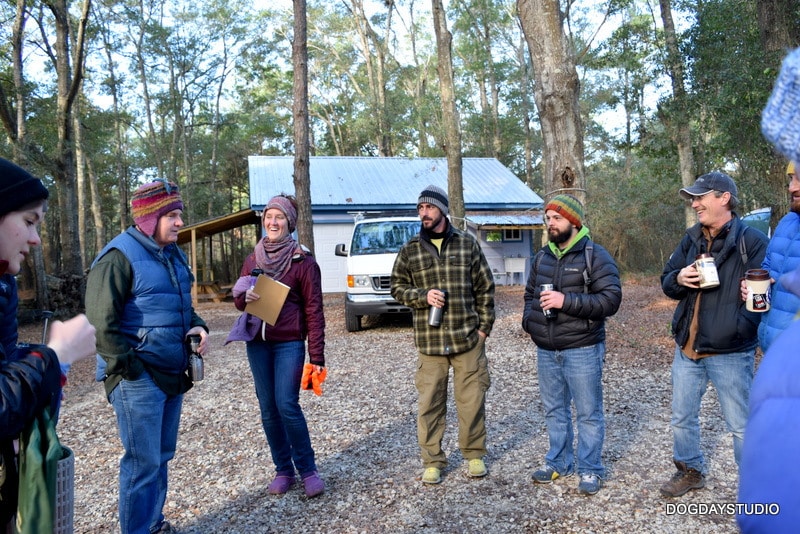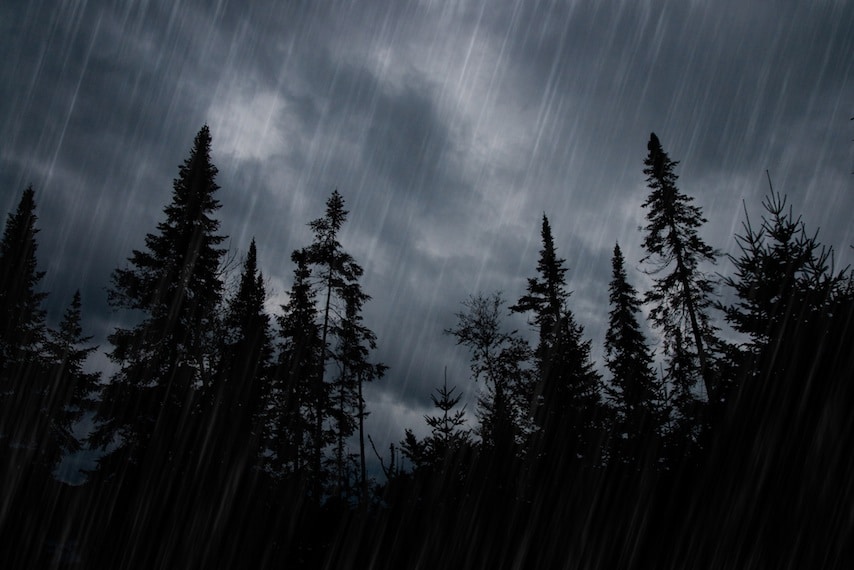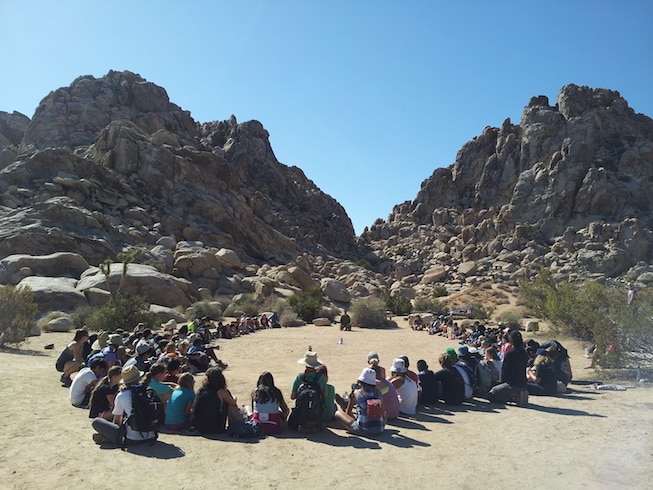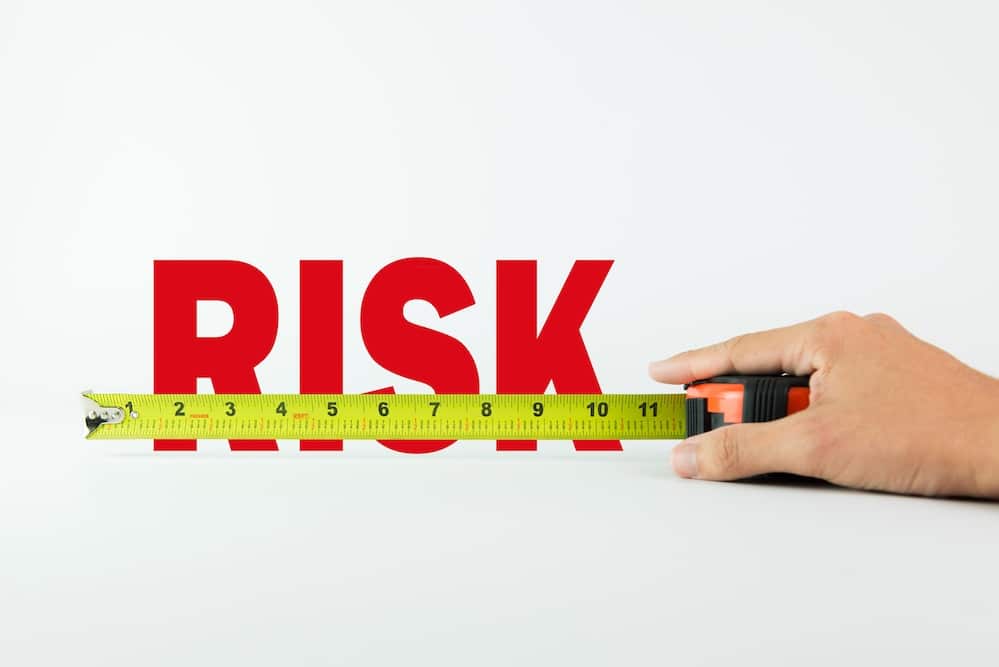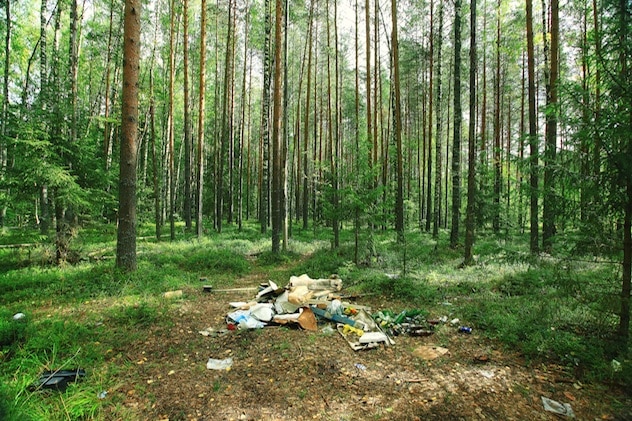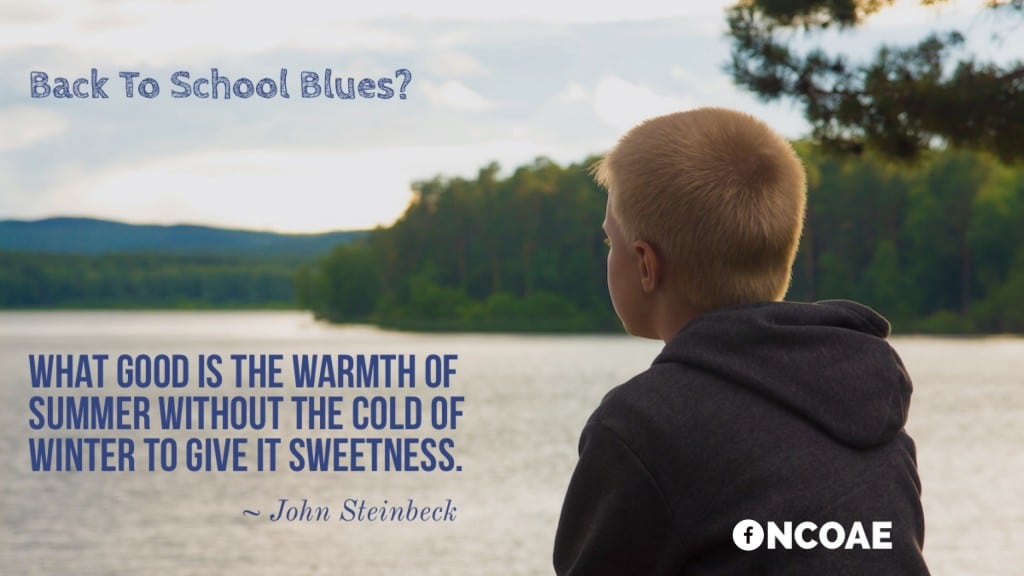NCOAE Blog
2 Words When Natural Disaster Threatens Your Outdoor Campus: Be Prepared
Risk ManagementFor those of us who work day in and day out at The National Center for Outdoor & Adventure Education’s (NCOAE) headquarters in Wilmington, N.C., tropical storms and hurricanes are part of our environment.
Just last year, Hurricane Matthew paid our campus a visit — right in the middle of a three-week campus-based course. But just like the Boy Scouts, we place a great deal of stock in their motto: Be Prepared.
By the time that hurricane came roaring through, we had battened down the hatches at our headquarters facilities and moved everyone enrolled in the three-week training to the Raleigh Durham area where they finished out their course. By communicating that potential change far enough in advance, no one was surprised. Our students finished their certification program on time and were safe in doing so.
And now Hurricane Irma looms on the horizon, threatening to make landfall along our coastline sometime next week. According to the latest National Hurricane Center reports, Florida could face direct impacts, with potential paths for the storms including a move further east to encompass the Carolinas and the East Coast. Mandatory evacuations have already been ordered for the Florida Keys.
Outdoor education programs — especially those accredited by the Association for Experiential Education (AEE) — are well versed on what to do in the case of a backcountry emergency or disaster. But how do you prepare for a natural disaster on your own property?
Below are 14 tips that we undertake and suggest for other outdoor education programs facing a disaster that might affect their properties: (more…)
Your School’s Next Custom Outdoor Education Program Starts Soon
Custom ProgramsYou don’t have to look at a calendar to know summer is quickly drawing to a close. Look at the traffic in your hometown. Notice anything different? How about the roads leading to and from local or regional shopping malls and big box stores? With most kids and their parents hitting the stores — or the Internet — in order to get properly outfitted for the school year, the telltale signs of the fall semester are all readily available.
What’s equally important as preparing for a new school year is planning ahead for personal end-of-year adventures that can keep you motivated over the next three-and-a-half months (or in the case of spring semester adventures — eight-and-a-half months) of textbooks, term papers, quizzes, and preparing for 45-minute lectures.
With some wise planning and a vow to battle procrastination, you can have a pretty good notion as to how you’re going to spend your next holiday or seasonal break from the classroom. And by having all your ducks in a row way before the end of the year, you’ll be rewarded by having that much more time to daydream about the adventure ahead.
As for group programs at the end of this coming academic semester or year, private schools and public school districts all across the nation have already designed and implemented (more…)
Education Shouldn’t Stop Once We’ve Returned from the Trailhead
Experiential EducationOutdoor and adventure-based education programs are designed to take students out of their home environment and place them in outdoor settings where they can experience adventures — adventures that highlight challenges, the need for having empathy for others, as well as the need to develop characteristics that can result in a new generation of community leaders and stewards of our environmental resources.
A huge task to be sure, but one of the ideas behind everything we do here at The National Center for Outdoor & Adventure Education (NCOAE), is that our students (and adult course participants) will walk out of the backcountry feeling stronger — both mentally and physically.
Following an adventure-based experiential education experience, we tell those we teach and guide that they are now better-prepared to go out and apply what they have learned in order to protect the natural environment, improve their own communities, and accept the challenges and rigors associated with their own education. But what happens when high school seniors brush themselves off at the end of such an adventure and decide they want to make that move to enroll in a college or university, only to discover the doors are shut to them.
What if the obstacles to their future success include (more…)
A Photograph Is Seldom Worth Even One Outdoor Education Experience
Outdoor EducationHere’s an exchange that recently occurred between a tourist and myself:
“What kind of camera do you use?”
“What?”
“What kind of camera do you use to show people what you’ve done?”
“I don’t,” I replied as I stepped onto the beach, board tucked under my arm, ready to paddle out to the surfline.
The woman appeared a bit confused by my answer, possibly perplexed that I wasn’t carrying a GoPro or waterproof camera on my morning adventure.
I recall as a kid we used to watch documentaries in school and read articles about cultures where the inhabitants refused to be photographed for fear it would steal their souls. We were amazed — and a little amused — that a primitive tribe or ancient community could believe that a small box that lets in light could actually snatch a soul.
Nobody’s stealing souls, we said. We all just seek memories. Something to show others where we’ve been and what we’ve accomplished, uncovered or learned. And, while flipping through magazines, that’s what we saw. Other people’s adventures.
But today, things are becoming a little more like the tribes fearing the loss of their souls.
Whether in the surf, on the trail or gazing at the pristine surroundings from atop a mountain, we’re constantly surrounded by people actively (more…)
Summer Vacation: When the Real Education Begins
Outdoor Education ResearchThe final bell has rung and children at public and private schools across the nation have cleaned out their lockers and headed out the doors and hopefully, outdoors.
Some of these children are departing schools that rarely allow their students to get down and dirty in the outside world — such as Polaris Charter Academy on Chicago’s West Side, where the school’s 450 students had been kept indoors due to fears associated with gun violence. In other parts of the country, fewer students get the opportunity to truly explore the world outside the playground or even lie down in the grass and point out the significance of cloud formations above.
These same schools, for a variety of reasons, don’t take the time to schedule impromptu short excursions to neighboring parks and wilderness areas, teaching students the names of native birds, plants and trees, pointing out urban and suburban wildlife, or following a slow-moving creek to a larger, more rapid tributary.
But just because most schools don’t fill that obligation doesn’t mean families can’t take over the job now that summer has arrived. The objective is to send these kids back to school in the fall — freshly cleaned up and rested — with heads full of new connections to the natural world.
So how do our children and students truly benefit from outdoor and adventure education? Here’s a short list of the positive attributes of wilderness exploration: (more…)
How and Why to Remove Junk Food from Your Backpack
Backcountry Prep“What’s fructose? What’s GMO? What do these words mean?
These are some of the questions my 9-year-old daughter asked me last June as the family shopped for good snacks for a backpacking trip. By July, my daughter had vowed to stop eating food with “junk” in it. And to date, she has kept her word.
Take a tour of your local grocery store, and peruse the list of ingredients on the back or side of the packaging of many of those so-called healthy snacks. You might be unpleasantly surprised to find that an abundance of these products tout themselves as containing all natural ingredients, when in actuality they contain just the opposite.
It’s a bad habit, but often when we shop for those “in-between foods” (between meals), we’ll grab up what looks good or is easy to pack. Or we find ourselves purchasing items out of habit or convenience. But the truth is on the trail:
Sugary, high-calorie snacks never translate into positive energy.
Time for Change
We’ve all experienced the benefits of using (more…)
The Time to Begin Preparing for Summer Adventures Started Yesterday
Life At NCOAEHere at The National Center for Outdoor & Adventure Education (NCOAE) you can find us toiling year-round to bring our students and clients the very best in guided outdoor adventures with meaning. So, as far as our staff is concerned, we’re always in the “getting ready mode” for outings in the wilderness.
But as we approach our busiest time of the year, we’d like to pose some questions for our seasonal participants:
- What are you doing to get ready?
- What does it mean to be ready?
- Can we ever really be ready?
Let’s distill outdoor preparedness into three categories, Physical, Emotional and Gear.
Physical: Lounging on the couch with a belly covered with unnaturally orange Cheetos dust while watching 180 Degrees South: Conquerors of the Useless for the 100th time might suggest it’s time to get busy getting fit before you head out on a course.
Whether that entails short hikes with heavy bags, bike rides across town, hitting the gym or some distance running, it’s entirely up to you to decide what works. Just know this. Time’s ticking and the first summer excursions are less than the turn of a monthly calendar page away.
Emotional: So you’ve been hiking, biking and swimming and you’re feeling like you’re getting your mojo back. Swell. Now it’s time to prepare mentally for what lies in store on the trail.
Take a moment. Close your eyes and picture your favorite course area. It’s easy to recall the bucolic views, pristine settings, and warm campfires at night. But they say pain has no memory. Now think about an unrelenting sun beating down on you, or a trip that featured nothing but rain, day and night. Your gear and body are getting funky, you’re exhausted. And when you look around, you notice your fellow course mates appear to have been (more…)
Assessing Seasonal Gear Leads to a Trip Down Memory Lane
Backcountry PrepSpring has sprung and it’s the beginning of another fine season of outdoor adventure, which means it’s time to start unpacking, inspecting, cleaning up and then repacking your gear.
As you start pulling out the dusty Tupperware containers crammed with camping gear you’ve had since your first journey beyond the pavement, take some time to reflect. Revel in the moment as you remove each memory from the box. Think about where that tool or boot or piece of canvas has taken you, and the gifts you in turn received by being able to use that equipment with confidence.
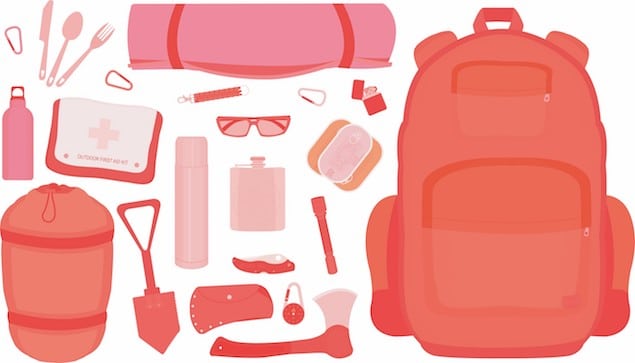
Dig deep and you’re likely to find a piece of gear that appears — to the uninformed — to be broken and unusable. But to you, a broken cam that you’ve had for years has meaning to it. In fact, you’re pretty much convinced that, in the event of an emergency, you could set that passive piece to save your butt.
As you’re reading this, one of you might be thinking about an unusual rock you and a buddy picked up on a particularly fantastic trip. It’s never left your bag. Maybe it reminds you of (more…)
5 New Staff and Instructors Join the NCOAE Family
Staff ProfilesHere at The National Center for Outdoor Education & Adventure Education (NCOAE), we recently welcomed three new field instructors, a climbing instructor and a program coordinator to our outstanding team of staff members.
Earlier this year, these five candidates — two women and three men — successfully completed our Winter 2017 Instructor Candidate Training Program, becoming part of a staff treasure trove that annually attracts some of the best outdoor and experientially-based wilderness educators in the country.
 Much of the success of our Instructor Candidate education goes to our training program, where NCOAE instructors work directly with candidates who — on their own steam — are highly qualified outdoor educators.
Much of the success of our Instructor Candidate education goes to our training program, where NCOAE instructors work directly with candidates who — on their own steam — are highly qualified outdoor educators.
Many of these candidates have worked for top-drawer wilderness organizations, and our training serves as a means of taking their experience and fine-tuning it to fit NCOAE’s extremely comprehensive curriculum.
Our candidates tell us that despite their prior instructor training and experience, an intensive week of training at our North Carolina headquarters only serves to ratchet up that experience, giving them something more meaningful when guiding and instructing in the field with NCOAE’s students and participants.
But enough about us. Let’s meet these five new NCOAE staff members: (more…)
NCOAE Seeks Funds to Send 10 Students to Alaska
Education Without WallsThanks to a $25,000 grant from the National Park Service (NPS), 10 students enrolled in our Education Without Walls program will participate in a 21-day summer 2017 backcountry adventure in southeast Alaska. The funding for the trip, which is designated as an NPS Challenge Cost Share Program Grant, covers nearly all the costs associated with taking the students to our northernmost state for what amounts to the trip of their young lives.
The only catch is, the five boys and five girls selected for this outdoor education and service learning adventure are still a bit shy of having enough funds to make the trip, which will be guided by a trio of National Center for Outdoor & Adventure Education (NCOAE) instructors, as well as two National Park Service archeologists.
Specifically, each of the students pictured above will need about $1,000 to pay for round- trip commercial airfare from Wilmington, NC, and bush flights throughout the Alaskan interior.
Once there, in addition to a rash of breathtaking day hikes and exploratory treks, the 10 students be working alongside a National Park Service archeologist to clear brush and debris within the Chititu Historic Mining Landscape. This historic area features more than 30 structures and features exemplifying a (more…)
Tales Told Around the Campfire Highlight a Backcountry Adventure
Backcountry PrepCrack, pop, pop, hiss. The campfire audibly confirms its presence as a contented audience sits around the pit, absently staring into the infinite colors created by the dancing flames.
When fire restrictions aren’t in place, campfires have always been a centerpiece for backcountry gatherings; a time and place where learning, cooking, impromptu singing, occasional horseplay and long descriptive stories punctuate comfortable stretches of silence.
But it’s the stories told around a campfire that are often among the most memorable portions of any wilderness outing — especially when one or more participants has some stories to tell and the ability to tell them well.
A few years ago I had the good fortune of leading a group of students on a trip that combined paddling, climbing and hiking. The weather was great for about 10 percent of the trip, which means the other 90 percent tested our resolve. As a result, our itinerary had to (more…)
Bears Ears Controversy Threatens Outdoor Retailer Show in Utah
Land ManagementThe National Center for Outdoor & Adventure Education’s founders Zac and Celine Adair recently returned from this month’s Outdoor Retailer Winter Market show in Salt Lake City, Utah, where the buzz inside The Calvin L. Rampton Salt Palace Convention Center was centered around moving the show out of Utah and to a state with “a more friendly view of federally designated lands.”
The controversy stems from a yearlong dispute that pits the present governor of Utah, Republican legislators and many residents of the area against environmentalists and dozens of Native American tribal nations.
The argument revolves around determining the best way to conserve and develop the Bears Ears area in southeastern Utah.
Named for a pair of isolated mesas resembling a bear raising its head above the horizon, Bears Ears National Monument encompasses 1.3 million acres of wilderness area between the San Juan and Colorado rivers. This triangle of land is held sacred by a number of Native American tribes, including a coalition of Hopi, Navajo, Ute Indian Tribe, Ute Mountain Ute and Zuni governments.
An estimated 100,000 archaeological sites are located — and protected — within the Bears Ears area, including cliff dwellings that date back more than 3,500 years and other cultural sites that are deemed sacred to the half dozen tribes that make up the coalition.
And while nearly everyone involved in this eco-dispute agrees the Bears Ears area should be protected, the extent of management of the land is in question, with many Utah legislators envisioning room for commercial development and fossil fuel extraction in lands adjacent to the area.
For more than four decades, Utah ranchers, residents and lawmakers have fought to (more…)
NCOAE Instructs the Instructors Through Instructor Candidate Training Program
Working at NCOAEWithout going completely overboard, we here at The National Center for Outdoor Education & Adventure Education (NCOAE) liken our popular Instructor Candidate (IC) training to a Hollywood red carpet event — without the egos or trophies.
That’s because this training attracts the best wilderness educators in the world to our North Carolina headquarters for five days of curriculum design and delivery training. It’s a time when NCOAE’s instructors get to work directly with some of the most highly qualified outdoor educators in the industry.
This “invitation only” event draws participants who have worked for other companies and schools on both the domestic and international levels. By the time they arrive on our campus for IC training, they are often looking for something different — something more meaningful.
As NCOAE instructors, we think of this educational training and refresher as a time of (more…)
Cheers to You and Us!
About NCOAEAs 2016 comes to an end, we’re honored to take a moment out from our end-of-year activities to say thank everyone for their continued support and encouragement of The National Center for Outdoor & Adventure Education (NCOAE).
When our founders Zac & Celine Adair started this organization in 2009, their mission then for NCOAE was as clear as it is today — improve people’s self-confidence and interpersonal relationships through the teaching of a core curriculum emphasizing teamwork, environmental stewardship and the acquisition of technical outdoor skills. We’ve come a long way since 2009, and guided by that same mission, 2016 has been another year of phenomenal growth.
A few key highlights: (more…)
What’s Your Plan if Your Wilderness Group Becomes Lost?
Risk ManagementIn the 1997 film “The Edge,” starring Anthony Hopkins and Alec Baldwin, the pair find themselves lost in the Alaskan wilderness following a plane crash.
The Hopkins character tells the other man that most people who become lost in the wild die of shame. “They say, ‘What did I do wrong? How could I have gotten myself into this? And so they sit there and they die. Because they didn’t do the one thing that would save their lives — thinking.”
Great movie, with the protagonists stalked by a Kodiak bear, but the question it raises is this: It’s easy to feel lost, but have you ever really been lost?
Sitting in with a group of wilderness instructors, you’ll sometimes hear personal stories of temporarily losing their way on the trail, and many of our students tell stories of “getting lost” while leading their peers.
One definition of truly being lost means “having to be found by others.” But if you find your way back to your group or destination on your own, maybe you were just “feeling lost” and then your wilderness skills kicked in to get you back safely.
However you define it, we all need to refresh our knowledge of knowing our way around the backcountry.
When Feeling Lost and Alone
Below are some tips on what to do if you (more…)
Outdoor Education Program Consulting Now Available
Custom Programs“Phone’s ringing, Dude” — The Big Lebowski
The phone’s also ringing here at The National Center for Outdoor & Adventure Education (NCOAE), and a good number of times the caller is representing a public, independent or charter school that is seeking help with their fledgling outdoor education and wilderness-based adventure programs.
These educational institutions either want to greatly improve their existing program or actually incorporate quality adventure-based experiential education into their current curriculum.
One director of a highly regarded independent school in the Pacific Northwest recently told us that — despite all the electronic means we currently possess to “stay connected” — many of her school’s students (more…)
Reducing Backcountry Risk Requires Planning and Assessment
Risk ManagementHere’s an outdoor educator’s nightmare: You’re walking through the woods and you spot a bunch of teens climbing barefoot on a rocky cliff leading to water. Other inexperienced campers clumsily tend a campfire that is about to get out of control. Still others in this group stand waist-deep in a river, oblivious to the fast-moving water just feet away, or the possibility of divers above them.
You look around and there doesn’t appear to be any adults, instructors or guides at this nightmarish campsite. What’s wrong with this picture?
First off, if you’re a professional outdoor educator or backcountry guide, you’re probably tempted to walk in amongst this mayhem and ask these youngsters what group they’re with and then ask them what it is they think they’re doing?
The Practice of Risk Management
Here at The National Center for Outdoor & Adventure Education (NCOAE), we take risk and site management seriously. To us, it’s far more than just a (more…)
Teaching Adventure Education Within the Constraints of Walls
Outdoor EducationWhen the busy season for summer-based outdoor education programming winds down, many in the outdoor education community may have found themselves returning to other avocations and means to make a living. For those of us who remain in the field of education — albeit in a more traditional setting — we continue what we know to be “best practices” as teachers.
“Classroom” is not a word we’re at all excited about. The hum of the fluorescent lights is like something out of a horror movie. And the designs of the windows seem to be lifted from a prison architect’s plan book.
Students make it outdoors only for recess, and that depends entirely on how much the teacher enjoys the outdoors. Otherwise, teachers and students alike are stocked away inside most of the day. At some schools, the physical education teacher doesn’t even take students outdoors.
All of this is a difficult reality for those of you who just spent three months each summer with students exploring wilderness and outdoor environs.
Experiential education, place-based learning, project-based learning, and adventure education — the list goes on and on. Schools use these terms to sell themselves. Read the descriptions published by public schools, charter schools and independent schools across the country and you’ll (more…)
Let’s Start a Conversation About Land Use Management
WildernessMore and more individuals, families and outdoor organizations are going to great lengths to enjoy wilderness experiences in our national forests, but with this exploding trend, how are we addressing the impact on natural resources? What does the future hold for outdoor recreation areas and natural setting outdoor classrooms?
As professional members of the outdoor industry, we are constantly trying to increase the numbers of programs and the number of students who participate in outdoor recreation and adventure programming endeavors. We look for course areas that are pristine — mostly because no one else is visiting those areas — yet. But the reality is this: If we are researching an untouched course area for our organization, you can bet there are a hundred others doing the same thing.
As educators and outdoor education administrators, we know that in order to appreciate and protect a natural space, have to engage with it. To be shaped by the beauty of the outdoors, you must be given the opportunity to live in it. How can you appreciate and protect something you’ve never engaged with or seen?
The outdoor industry has been working with the (more…)
What Good is The Warmth of Summer, Without The Cold of Winter to Give it Sweetness
Education Without WallsThe heat index read 110-degrees. Clouds were building, preparing to light up the sky with electric current and release rain by the bucket loads. It was still summer, yet parents were starting to ask questions about school, course loads, teachers and materials needed to start the year. Year-round schools were already weeks into the fall semester. It’s sad on many levels to think that the season for fun in the sun was coming to a close.
For students enrolled in The National Center for Outdoor & Adventure Education’s Education Without Walls (EWW) program, stepping out of the woods and back into the classroom is a time for them to test their new skills, to experience their new powers and to celebrate the success that accompanies effort and accomplishment.
It’s distressing to be wet for days on end. Watching lightning light up the inside of the tent can be paralyzing. Hanging off the edge of a 200-foot rock wall makes the brain spark and flutter. In the end, however, these are the experiences that can never be taken away by tensions and frustrations at home, in school and in the community at large. It’s these experiences that give our students the (more…)
TALK TO US
Have any further questions about our courses, what you’ll learn, or what else to expect? Contact us, we’re here to help!
